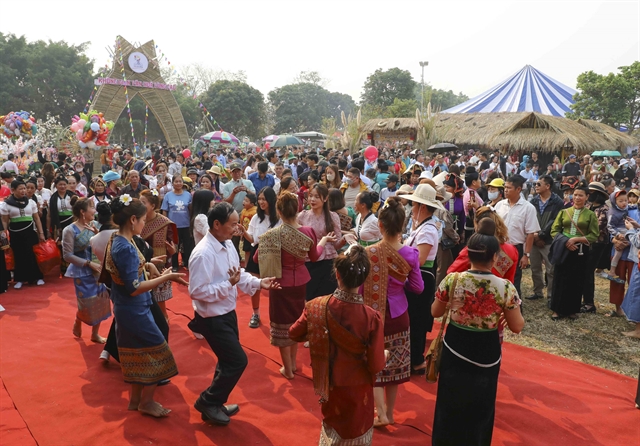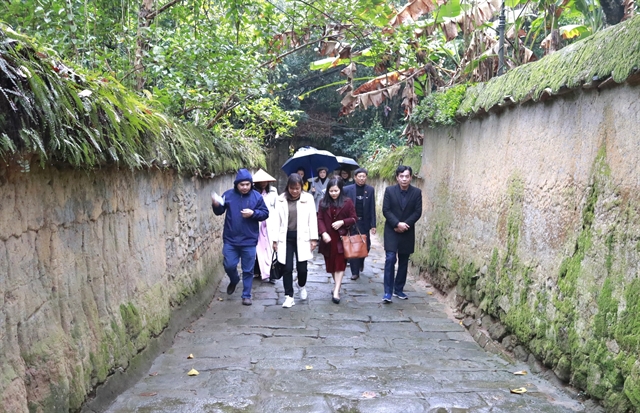 Politics & Law
Politics & Law

 |
| Delegates survey the tourist destination of Bổ Đà Pagoda, Tiên Sơn Commune, Việt Yên District, Bắc Giang Province. |
BẮC GIANG — The Bắc Giang Provincial Tourism Association, in collaboration with tourism associations from northern provinces and cities, recently organised the 2024 Tourism Development Cooperation and Linkage Programme.
The event was attended by Vũ Thế Bình, chairman of the Việt Nam Tourism Association, Mai Sơn, vice chairman of the People's Committee of Bắc Giang Province, along with numerous members of the tourism association from 23 northern provinces and cities, as well as travel and tourism companies.
The delegates emphasised that linkage and co-operation in tourism development are essential requirements for the growth of the tourism sector. Linking various regions helps in expanding the tourism space, promoting the unique strengths of each locality, and creating diverse and attractive tourism products. It also enhances the competitive advantage, mobilises resources, generates advertising power, and stimulates the promotion of destinations, investment attraction, as well as inter-local and inter-regional socio-economic development.
Regarding the province's tourism development efforts, vice chairman of the Bắc Giang Provincial People's Committee, Sơn highlighted the significant potential for tourism in Bắc Giang. However, the exploitation of this potential remains limited. Currently, the province is focusing on developing eco-tourism, resorts, cultural, sports, and entertainment spaces that are associated with scenic spots and historical and cultural relics within the province.
"In particular, the province prioritises the development of tourist areas that connect the regional tourism space with surrounding localities, forming inter-regional routes and tours such as Hà Nội-Bắc Ninh-Bắc Giang-Lạng Sơn," Sơn said.
Sơn also expressed hope that the tourism associations of different provinces would promote the introduction and promotion of Bắc Giang's tourism potential to travel agencies, companies, and tourists. Additionally, he encouraged the sharing of successful experiences in tourism development to facilitate mutual learning among provinces.
During the event, some delegates discussed the limitations and challenges in achieving effective linkage and cooperation in tourism development. These included the lack of comprehensive solutions to fully leverage the strengths of member associations, as well as the scarcity of specific and effective programmes and plans for deep and wide connectivity among member associations and between tourism and travel businesses. Furthermore, there was an incomplete awareness among certain businesses and members regarding tourism links.
To address these challenges, delegates proposed several ideas to promote links and cooperation in tourism development between provinces. Key recommendations included strengthening cooperation among provincial tourism associations to share experiences in tourism development, devising solutions that foster cohesion between localities, and collaboratively building new breakthrough tourism products.
Other suggested methods for fostering tourism development among provinces included a gradual shift from destination-based tourism to regional tourism, establishing the image of a modern, unique, high-quality, friendly, and safe regional tourist destination, and strengthening links between member associations, particularly in promotional activities. It was also proposed to organise destination promotion programmes, develop tourism products and services, and host cultural, tourism, and sports events. Furthermore, delegates highlighted the importance of establishing cooperation agreements to facilitate the exchange of tourists between travel businesses and tourist destinations.
Simultaneously, the provinces aim to attract investment projects in the tourism sector by actively promoting and introducing their respective localities. They also plan to develop a co-operation plan for training human resources in the field of tourism, provide information support, and offer local training activities for member associations. VNS




